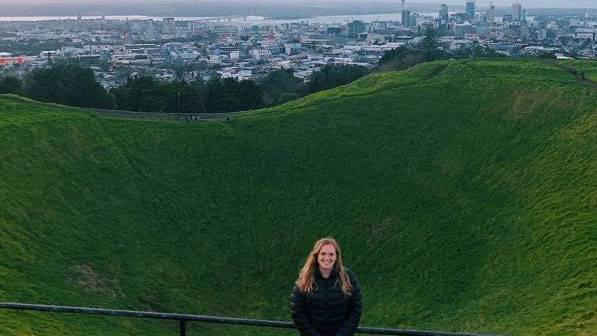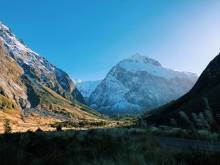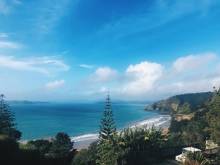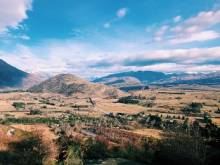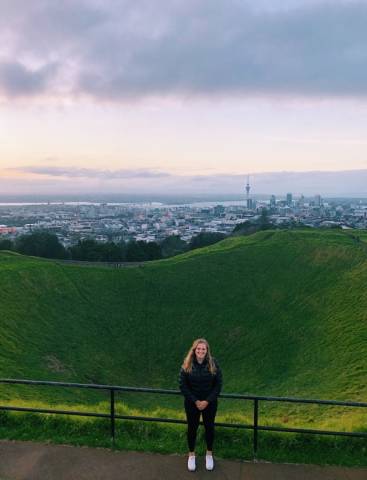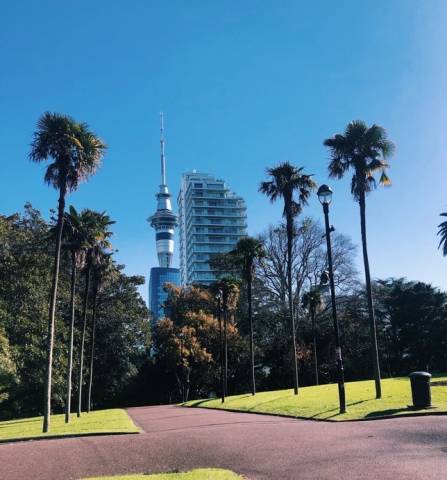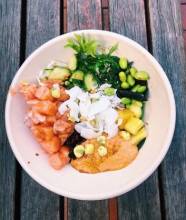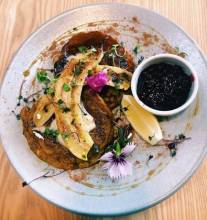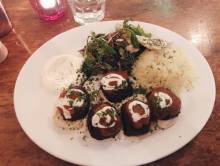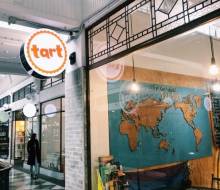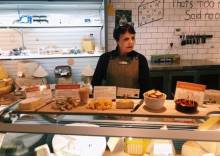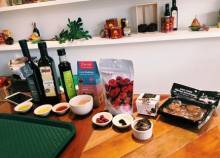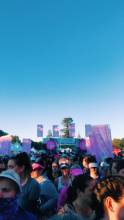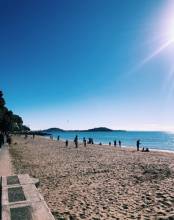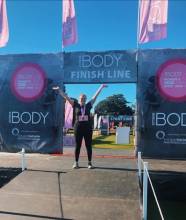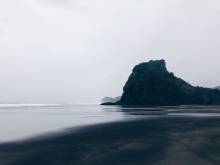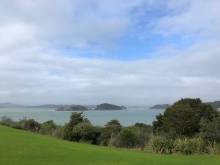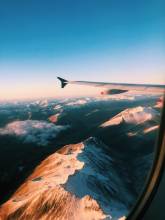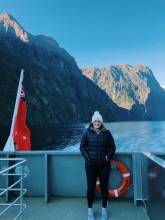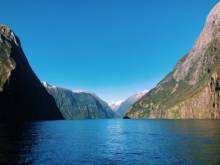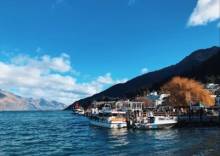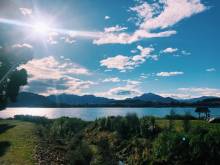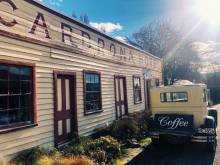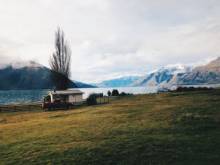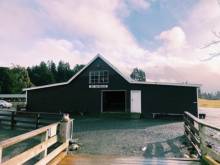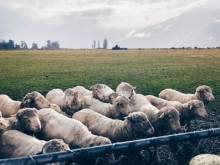After my semester abroad in Wollongong, Australia, where I took a course on nutrition, I spent two weeks of July 2019 immersing myself in the culture and geography of different regions in New Zealand. As an aspiring medical student from rural upstate NY, who had the opportunity to learn about nutrition both in and outside of the classroom in Australia, I was curious to learn about nutrition and wellness in one of the most geographically unique countries in the world.
Before this project, I had preconceived notions about New Zealanders and their nutrition and wellness from talking to others who had travelled there and from what I learned in Australia. I viewed New Zealand as a country full of strikingly fit and healthy people, and I was driven to investigate how, why, and if these ideas were true. Although I had specific places and activities planned in order to inform my learning, including visits based in Auckland of the north island and Queenstown in the south island, I really did not know what to expect or what I would learn. I booked my 15 days full of tours of different regions throughout the country with local tour guides to learn if and why New Zealanders live healthy lives. Furthermore, I was interested in observing the availability of vegan, vegetarian, and gluten free options in different parts of the country, as I have seen my sister struggle and succeed in finding vegan options for herself in different geographic locations of the United States. I noticed it was much easier to find these options in Australia than where I have lived in the United States, so I was intrigued to see how the accessibility in New Zealand would compare.
After taking notes each day and organizing my thoughts and observations, I learned that the impacts of geographic location, colonization, and tourism work and overlap to influence nutrition and wellness in New Zealand. Before I unpack these observations, I want to acknowledge that this information is coming from my own perspective as a white, middle class, college-aged female and that someone with a different identity may have a different perspective and learning experience. Nonetheless, my time in New Zealand shed light on a variety of factors that influence health and well-being, most of which are not included in medical school curricula but are still important social determinants of health to know about for a career in medicine and caring for others.
Auckland
Auckland, NZ is one of the most well-known and populated cities in the north island. I chose to stay here for the first week of my project because there were various tours to more remote and rural areas of the north island that left from Auckland, and I felt I could maximize my observations and travels from this area. Here, I quickly learned the impact of being in a highly populated and diverse city on nutrition and wellness. Not only was there a wide array of cultures represented, but every restaurant I went to had at least one - some an entire section of the menu- vegan or vegetarian option. In the heart of the city, one could find Thai, Mexican, Indian, Italian, and American food. In addition to these restaurants, even most fast food places had many plant-based options on the go. For example, there was a fast food restaurant called Lord of the Fries that was entirely plant-based, and a local Mexican restaurant had jack-fruit as an option instead of meat, a Thai food place that was 100% plant-based, and a popular café that used all raw, natural, and plant-based ingredients all within walking distance of the center of the city. Aside from restaurants, there were a plethora of cafes and small convenience stores with a variety of options in terms of cultural and dietary preferences.
I learned more about food availability in the city of Auckland on a food tour with a wonderful local guide, Elle. She took us to a famous espresso bar and roastery where coffee is made and exported throughout Auckland and NZ and explained how coffee is an important part of the New Zealand culture and diet. She explained how the success of the coffee was highly determined by the quality of soil and how one year there was a bad batch because of the weather in a particular region. Next, she took us to Tart Cafe, a 100% plant-based, award-winning cafe in Auckland. Dairy alternatives included almond, soy, oat, coconut, and rice milks and nut-based cheeses. Elle explained the challenges and cognitive dissonance faced by New Zealanders in terms of plant-based diets and the need to save the planet in contrast with the high percentage of livelihoods that are dependent on dairy farming. 95% of the dairy in New Zealand is exported, and it is important for the economy of the country, which makes plant-based eating harder for farmers while it is easier for those who live in cities. Therefore, it is important to note the differences in food accessibility in terms of urban versus rural living. In Auckland, it was easy to find nutrient rich and accommodating options for almost any dietary restriction because cities tend to be more populated and more involved with imports and exports of food. Elle also took us to a market where most local chefs shop, where we learned about the diversity and cultural significance of cheese made in New Zealand and imported from other countries. Cheeses were made from cows, goats, and sheep from all over New Zealand, and thus, are highly revered in cooking.
Aside from the wide variety of food options in Auckland, I was able to learn a lot about the level of fitness and activity of New Zealanders living in and around the city. In order to get a more immersive understanding of wellness, I participated in an all-women’s half marathon at Mission Bay in Auckland. This event allowed me to see how passionate many of the New Zealanders I interacted with were about physical activity and the outdoors. Women of all ages, from young girls to women in their 70s were running a 5k, 10k, or 21k. I went to Mission Bay to pick up my packet and bib the day before, and there were various people walking, running, and biking along the Bay. I walked almost everywhere when I was in New Zealand, and the natural layout of the city makes it so that people are able to walk and get physical activity on a daily basis. On a tour that took me out of the city to Piha Beach, a black-sand beach known for surfing, I learned more about the active lifestyle in New Zealand for those who surf for sport, which is another way New Zealanders in this area stay fit.
One aspect of nutrition and wellness in New Zealand that I did not expect to learn so much about during my time here was the impact of European colonization on Maori life and how this influenced the health and well-being of New Zealanders for years to come. The Maori people were the first to live in New Zealand, and their way of life and land were taken from them through a treaty at the Bay of Islands. I took a bus from Auckland to the Bay of Islands, where I toured the Waitangi Treaty Grounds and learned about the colonization of New Zealand from an Indigenous tour guide. On these treaty grounds, European colonizers coerced Aboriginal Maori people of New Zealand to sign a treaty with the British crown, initiating colonization of the North Island. Prior to colonization, there were no four-legged animals in New Zealand. The Maori people ate a plant-based diet, with the exception of birds for protein. Holistic and herbal health was, and still is, very important, and a spoonful of manuka honey a day was important for strong bones and good health. Additionally, plants were valuable assets to health, as cocoa plants were used as herbal medicine. The colonization of New Zealand by Europeans had a drastic impact on the types of foods and nutritional practices of the country, as dairy farming is now the second largest industry behind tourism. In my analysis of nutrition and wellness of New Zealand, I felt it important to include the nutritional history of all people who have lived in New Zealand, not just the present-day descendants of European colonizers.
Many of the tours I went on touched on the impact of tourism on New Zealand as a country. Tourism is New Zealand’s number one industry, which no doubt has an impact on the types of foods and activities offered in certain parts of the country that exist for tourism. Thus, even more remote and rural areas have become more globalized as a result of tourist demands. From my observations and experiences, Queenstown was much more infiltrated with tourists than Auckland, as its geography allows for tourist activities who may practice nutrition and health differently.
Queenstown
The second half of my trip was spent in Queenstown, NZ. Queenstown is very different from Auckland, which is why I stayed there next. I wanted to get as diverse of a feel for the country I could get in a short time. While Auckland was less touristy and situated in a city in the north island, Queenstown was embedded in a more rural area with one center area dominated by extreme sport activities, such as bungee jumping and skiing, and a tourist village. Also, it was in the South Island and had a much colder climate. Most of the restaurants and stores I went to in Queenstown seemed to be meant for tourists, whereas the places I ate and shopped in Auckland seemed more targeted at local New Zealanders. Therefore, I was able to learn more about the impact of tourism on nutrition and wellness; another factor I had not thought much about before. Although it may seem obvious as a determinant of health and nutrition, I had also not given extensive thought to the impact of geographic location because I have lived in one type of rural/suburban location my entire life. Geographic location is important because it plays a huge role in accessibility of types of foods and types of activities available. For example, outside of the touristy area of Queenstown, many southern parts of the island still remain untouched by human pollution. On my tour of Milford Sound in Fiordland National Park, I learned that the water there in the Tasman Sea was completely natural and untainted by farming chemicals. Further, I learned that there are 25 crayfishing vessels in the Tasman Sea and that the crayfish market fluctuates depending on the time of year, again pointing to the influence of geography on nutrition and accessibility of fresh, healthy food.
Outside of Queenstown, the geography of the south island and the smaller towns surrounding it primarily focused on the use of dairy farming and local markets for nutrition and wellness. On one of the tours I went on, led by a local tour guide, I visited the small towns of Wanaka and Arrowtown. Wanaka began as a sheep farming community and is now a resort town that slowly developed over time as more people visited. It is now the place where many skiers and mountain climbers reside and visit due to the surrounding mountains, glaciers, and alpine lakes. The town is modern, clean, and safe, and I was able to get my drinking water right out of a spicket because the water is so fresh and pure. Because of all of the mountains, people are able to stay extremely fit if they choose to take advantage of the outdoors through hiking and skiing, and many do in these areas. Since it is quite expensive to live in Wanaka, residents are choosing to be there for the outdoors and a multitude of physical activities available right in their own backyards. Arrowtown was another old town we visited, which is home to gold mining in New Zealand. Tomatoes, potatoes, lettuce, cherries, and apricots are known for growing well in Arrowtown, although most people travel to Queenstown or a supermarket close to the airport for fresh quality produce.
My last tour in Queenstown was a cruise across Lake Wakatipu to Mount Nicholas to learn what it is like to live and work on a farm in southern New Zealand. Although the Mount Nicholas farm offers many tours, it is more isolated from the tourist center of Queenstown, and you must get there by boat. Only 16 people live on the farm at once, and they pride themselves on keeping it sustainable. The sheep stay out up in the mountains rather than in barns, they own 35 chickens to produce eggs but are not used as a source of meat, and there are no processed foods. However, the likelihood of being vegan or vegetarian on a farm is slim because the whole food sources include meat and dairy. Pigs are the main source of meat, sheep are used to make wool, and cattle are used for their milk. All of the animals are treated very well. Additionally, manuka honey is used for medicinal purposes, and this farm has a kale field for its nutritional value as a superfood. Here again, we can see how both geography and colonization have contributed to Mount Nicholas, as the isolation and landscape of the area allow for a successful, sustainable farm with unprocessed foods. However, we can also see the drastic impact of colonization, as prior to European takeover, there were no cattle, sheep, pigs, or chickens in neither the south nor the north islands of the country and therefore this farm would not have existed prior to European arrival.
Implications
Although my stay in New Zealand was short and I was not able to hit every region of the country, the observations I made and the knowledge I gained are invaluable. New Zealand is a unique country because of its tourism industry and because of its unique mountainous and island geography. After analyzing all that I learned, I came to realize that topics such as nutrition and wellness are much more multifaceted than I thought and can be impacted by categories that many healthcare providers may not consider. My observations on how geography, tourism, and colonization have impacted and continue to impact the nutrition and wellness of New Zealand have taught me to be more open-minded and to think outside of the box when considering an aspect of health, such as diet and exercise. More importantly, I will continue to think about how multiple parts of one area of study overlap and intersect to create a unique lived reality, as geography, tourism, and colonization have for the people of New Zealand. I am extremely gracious toward the AMS program for giving me this valuable experience to learn how to observe, question, grow, and be an independent creator of knowledge.
